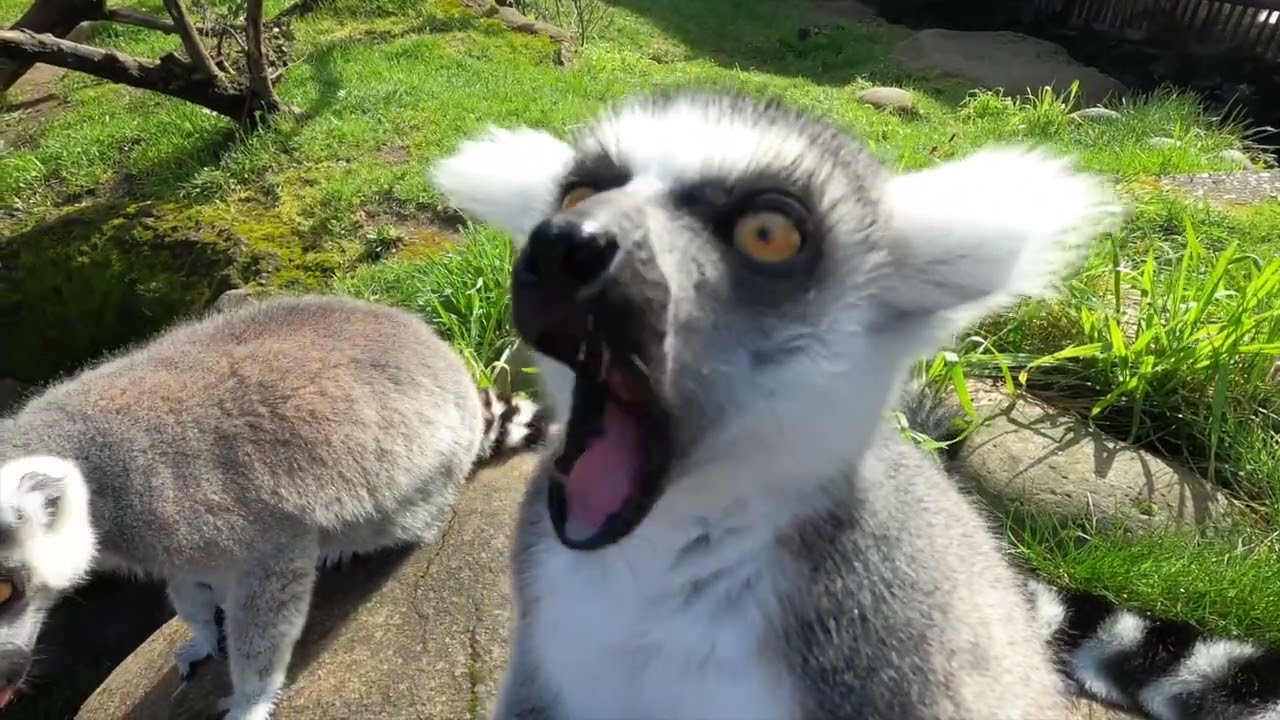– Leaping lemurs’ dietary preferences and nutritional needs
– The role of zoos in wildlife conservation and education
– Strategies for protecting the natural habitats of lemurs and promoting biodiversity
Leaping lemurs chomping on juicy grapes is a captivating sight that presents an adorable scene and a window into the complex dietary needs and behaviors of these fascinating primates. Lemurs, native to Madagascar, have evolved to consume various fruits, leaves, and even insects, depending on their species and the availability of resources in their natural habitat. This article aims to shed light on the dietary habits of lemurs, the indispensable role zoos play in their conservation, and the critical measures needed to preserve their wild habitats.
Dietary Preferences and Nutritional Needs
Lemurs have diverse dietary preferences intricately linked to their survival and reproduction. Primarily, these primates favor fruits, including grapes, which provide them with essential nutrients such as vitamins, minerals, and hydration. Beyond just their preference for juicy fruits, some lemur species exhibit remarkable adaptations for feeding on other types of food. For instance, the indri, one of the largest living lemurs, consumes mostly leaves, demonstrating an adaptation known as folivory. These dietary patterns are not random but are carefully aligned with the nutritional demands of their bodies and the ecological niches they occupy.
In managing lemur diets, particularly in zoo settings, zoologists and wildlife managers strive to replicate the nutritional compositions found in their natural diets as closely as possible. This includes offering a varied diet of fruits, vegetables, and specially formulated feeds that cater to their nutritional needs. Achieving this requires a deep understanding of each species’ natural foraging behaviors and dietary needs, highlighting the importance of ongoing research and observation in both wild and captive environments.
The Role of Zoos in Wildlife Conservation and Education
Zoos play an unparalleled role in wildlife conservation, acting as sanctuaries for many species facing threats in their natural environments. Beyond their appeal as entertainment venues, modern zoos are centers of learning and research dedicated to preserving biodiversity. By housing leaping lemurs and other endangered species, zoos provide a unique opportunity to study their behaviors, dietary needs, and reproductive systems in detail. This information is crucial for developing effective conservation strategies and educating the public about the importance of wildlife conservation.
Moreover, well-structured zoo exhibits allow visitors to witness the beauty and complexity of lemur behavior, including their diet of juicy grapes and other foods, fostering a deeper appreciation and respect for these animals and their plight in the wild. Educational programs synchronized with these exhibits empower visitors with knowledge about lemurs’ challenges, such as habitat loss and climate change, and encourage proactive engagement in conservation efforts.
Strategies for Protecting Natural Habitats
Protecting the natural habitats of lemurs is fundamental to their survival and the overall biodiversity of our planet. Habitat destruction, mainly due to deforestation for agriculture and logging, poses the most significant threat to lemur populations in Madagascar. Effective conservation strategies must, therefore, include measures to curb habitat loss, protect existing forests, and restore degraded areas. Community-based initiatives that involve local populations in conservation efforts are showing promise in achieving these goals. By providing alternative livelihoods that reduce reliance on forest resources and promoting sustainable land management practices, communities can actively preserve lemur habitats.
Moreover, international cooperation and funding are vital in scaling conservation initiatives and research projects to protect lemurs. Global partnerships can facilitate the exchange of knowledge, resources, and best practices in conservation management, ultimately contributing to the survival of these unique primates and their natural environments.
In summary, leaping lemurs chomping on juicy grapes symbolize the intricate balance between animal behavior, dietary needs, and conservation efforts. Understanding and catering to the dietary preferences of lemurs are central to their care, whether in the wild or captivity. Zoos play a crucial role in conservation, serving as hubs for educating, researching, and preserving endangered species like lemurs. However, the long-term survival of lemurs hinges on the protection and restoration of their natural habitats, underscoring the need for collaborative and community-based conservation strategies. By prioritizing these efforts, we can ensure a future where leaping lemurs continue to thrive in the wild, contributing to the rich tapestry of biodiversity that sustains our planet.
*****
Source Description
Have a grape day
Lemurs have a special way of eating fruit. Their bottom teeth form a toothcomb structure, which they use to groom and grab tasty snacks!

